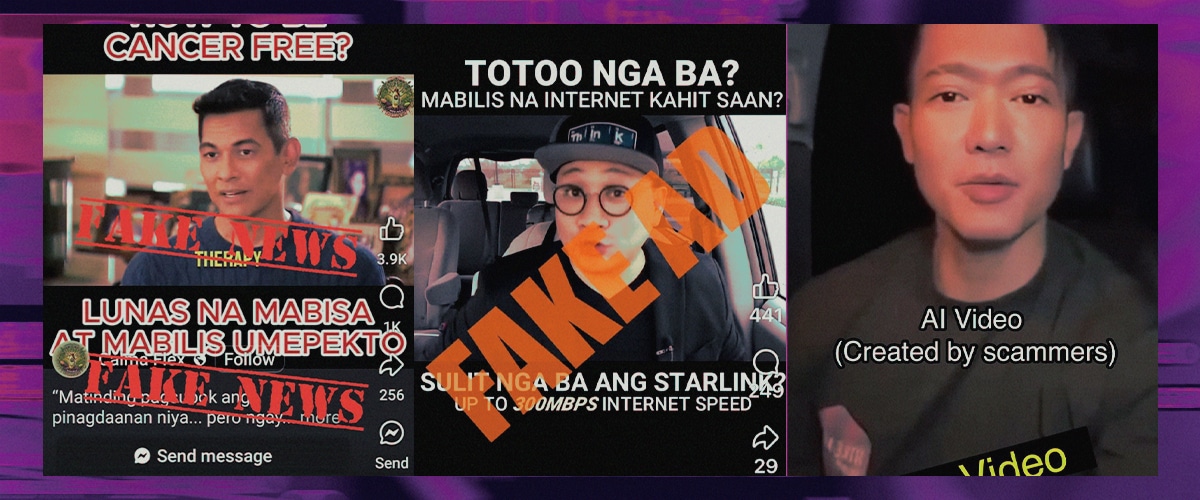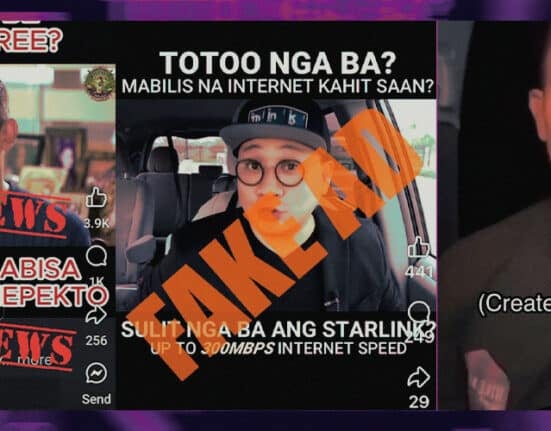IT cannot be denied how artificial intelligence (AI) has made people’s everyday lives a little easier.
It provides numerous benefits, ranging from making learning more accessible and efficient for students to enhancing employees’ productivity and bringing entertainment by making video game characters and special effects in movies and television series more dynamic and lifelike.
While it has a lot of potential, AI also poses dangers and risks, including disinformation, data privacy issues, intellectual property infringement, and online fraud.
In the Philippines, several media personalities have cried foul over being used by AI to scam individuals.
Case in point: singer and actor Ronnie Liang, who recently warned the public about a deepfake video using his face and voice for romance and investment scams.
Celebrities as deepfake subjects
On Instagram, Liang shared the deepfake video and screenshots of messages by scammers pretending to be the singer to extort money from their victims by investing in cryptocurrencies. Deepfakes are videos, pictures, or audio clips made with AI to resemble a real person.
The clip showed an AI-generated Liang greeting a special fan in English and saying he does not usually send “private messages or video calls.” However, the original version was from the singer’s Facebook live, where he was greeting his fans in Tagalog, apologizing to them for not always being active on the social media platform.
“Grabe, natakot at nabahala talaga ako sa video na ‘to,” Liang wrote in the caption.
The singer said he has received complaints from some individuals, saying that they received the deepfake video and fell victim to it. He denied that he was behind any video asking for money and crypto investment and courting a Filipina or foreigner.
“Pakiusap, gusto kong malaman ng publiko: HINDI ko ginawa ang mga ‘yan,” Liang warned the public.
He clarified, “Wala akong natatandaan na gumawa ako ng video para manghingi ng investment sa crypto, pera sa panliligaw, o ipa-send sa bank accounts/e-wallet.”
Several local celebrities have become subjects of recent fake advertisements using AI, including Original Pinoy Music (OPM) icon Gary Valenciano and comedian Michael V. The AI-generated clips of Valenciano and Michael V. showed them promoting a supposed cancer cure and an internet device, respectively.
The two warned their social media followers that the ads were fake, sparking concerns and fears about AI among the netizens.
Put a disclaimer
Amid the spread of deepfakes on social media, the Cybercrime Investigation and Coordinating Center (CICC), an attached agency of the Department of Information and Communications Technology (DICT), has proposed that creators add a disclaimer on their AI-generated content to avoid disinformation and scams online.
CICC Deputy Executive Director Renato “Aboy” Paraiso made the suggestion, as the agency tracks down individuals who use AI for scams and spread false information.
Meta, which owns Facebook and Instagram, has required an AI label to “photorealistic video or realistic-sounding audio that was digitally created, modified or altered, including with AI” on its platforms.
Likewise, TikTok has encouraged its users to label their content that has been either “completely generated or significantly edited by AI.”
There are many ways to spot deepfakes on the internet, including paying attention to inconsistencies in facial features, lip movements and audio signals, and lighting.
The Department of Education (DepEd) earlier highlighted the need for critical thinking amid the rise of AI and deepfakes. Education Secretary Sonny Angara also said that they are working on establishing an AI research center to help students navigate the ever-evolving digital landscape.
AI-generated bank transaction screenshots
AI tools can now also be used to manipulate online bank transaction receipts.
This was something that a Facebook user warned the public about, after a batchmate sent them a screenshot of a fake bank transaction generated using ChatGPT to make it look like they returned their borrowed money.
In her now-viral post, the netizen shared that they only confirmed that no fund transfer was actually made when she returned to the country and audited her funds.
“One failed transaction is pwede pa pero five transactions? No! Mali ko is ‘di ko na-check right away,” the user said, explaining that they did not immediately verify the transaction since they trusted their batchmate.
Eventually, the netizen found that the proof of payments sent to them and their other classmates, to whom their batchmate owed money, were generated using ChatGPT.
“Come on! I found out that AI, ChatGPT can be used for fraud and bad faith,” the social media user said.
“Sa end ko, dapat chineck ko Mabuti. Nasa galaan kasi ako niyan, pawala-wala pa signal,” they added in the comment section of the post.
To demonstrate how bank transaction receipts can be manipulated, the netizen shared a ChatGPT conversation where they instructed the AI tool to generate a fake bank payment with a P25,000 deposit using an old proof of payment with only a P16,400 transaction.
A copy of the receipt with higher deposit was immediately sent to the netizen, but other details such as the confirmation number were unchanged.
“Mag-ingat kayo, always check if pumasok ba sa account niyo ‘yung transaction,” the Facebook user warned the public.
Their viral post has now garnered over 51,000 shares on Facebook.
Verify payments through online banking app, website
Ayala-led Bank of the Philippine Islands (BPI) has issued tips to the public to prevent being scammed through AI-generated bank transaction receipts, saying that they should not rely on the payment screenshots alone.
To verify the fund transfer, one can check their account via the BPI app or BPI online.
“Fund transfers between BPI accounts and interbank transfers via InstaPay are credited real-time kaya malalaman mo kung may pumasok talaga na pera sa account mo,” the bank said in a Facebook post.
BDO users can also verify payments through the BDO Online app.
In a December 2020 Facebook post, BDO said transfers from BDO to BDO accounts and cash payments done over the counter reflect in real-time. Meanwhile, fund transfers from other banks can take up to three banking days to show in the user’s list of transactions.
GCash users, on the other hand, can verify fund transfers through their “Transactions” tab on the app. From there, they can double-check if the amount, sender, date, time, and reference number are the same as the details on the e-receipt.
“Kung may mali, scam ‘yan!” GCash warned.
“Mas gumagaling ang scammers sa paggamit ng AI para manloko ng tao. Kaya para sigurado, lagging i-check ang Transaction History,” it added.
How useful was this post?
Click on a star to rate it!
Average rating 5 / 5. Vote count: 1
No votes so far! Be the first to rate this post.
We are sorry that this post was not useful for you!
Let us improve this post!
Tell us how we can improve this post?







